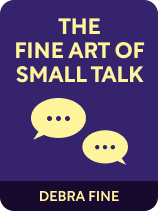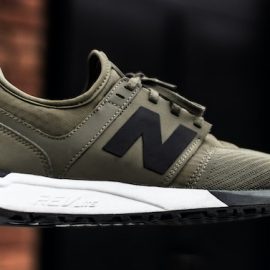

This article is an excerpt from the Shortform book guide to "The Fine Art of Small Talk" by Debra Fine. Shortform has the world's best summaries and analyses of books you should be reading.
Like this article? Sign up for a free trial here .
Do you find it awkward to talk to people you don’t know? How do you start up conversations with coworkers or with a date?
Not all of us are blessed with the natural ability to start up a conversation with somebody we barely know. If you’ve ever been to a business meeting, a party, or even on a date with someone new, you know the feeling. But luckily, you don’t have to be a natural extrovert to be good at conversations, you just need to know how to break the ice.
Keep reading for advice on how to break the ice.
Breaking the Ice
Knowing how to break the ice is the foundation of striking a connection with someone new. According to Fine, it doesn’t matter much what you say as an opener; in theory, you could say anything. What matters is that you initiate the conversation and show genuine interest in the other person’s answer. Her recommendation, if you’re having trouble, is to open with a statement that uses the context of the situation, event, or venue, and then ask them a related question.
If you’re afraid to talk to someone because you fear you’ll have nothing in common, Fine suggests you keep in mind that humans are more alike than they are different. If you give other people a chance, she says, you’ll find you can connect with almost anyone.
(Shortform note: You may feel doubtful that Fine is correct here; surely, considering the diverse range of cultures and life practices that exist across the world (and even within countries), it’s optimistic to say we can connect with almost anyone? However, according to research, Fine is correct: The human experience, broadly speaking, is less diverse than it seems. In a study spanning 62 countries around the world, researchers found that our daily experiences are largely universal. For instance, we all care about our friends, want to love and be loved, and enjoy laughing, companionship, and cooperation.)
Easy Ways to Start Talking
Sometimes, it’s hard to initiate a chat because you don’t know what to say—and hearing that you can talk about anything as an icebreaker, as Fine suggests, may overwhelm you, as it gives you too broad a list of possibilities.
Fine does provide a specific list of icebreakers in her book, but most of them are business-focused or come too far out of the blue to be generally applicable—like, “I’m excited about our new mayor. How do you think her administration will differ from her predecessor’s?”
Instead, here are some go-to styles of opener you can use in most contexts, and an example of each:
Commiserate: “We’ve been waiting in line a long time, haven’t we? What brings you here today?”
Notice something pleasant: “I’m so glad I came out for this concert; wasn’t that guitar solo incredible?”
Compliment someone: “I really appreciated your presentation—the way you laid out the details made it easy to follow and understand.”
Leverage commonality: “I’m in marketing, too! How long have you been in the business?”
Seek an opinion: “I’ve been thinking about attending this workshop, would you recommend it?”
Ask for easy help: “Do you know when the food is supposed to arrive?”
Help someone out: “That printer looks heavy, can I give you a hand?”

———End of Preview———
Like what you just read? Read the rest of the world's best book summary and analysis of Debra Fine's "The Fine Art of Small Talk" at Shortform .
Here's what you'll find in our full The Fine Art of Small Talk summary :
- Why we need small talk and why we shouldn't avoid it
- How to appear confident and engaging in any context
- How to break the ice with strangers and keep the conversation going






